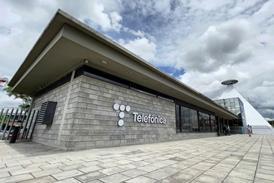- Connectedness enabler Prodapt urges telcos to have domain‑focused players run managed services at scale and perform transformation, to ensure disruption‑free operations and synergy between siloed functions within the telcos themselves.
- Prodapt believes that non‑specialised offshore centres no longer offer the same monetary benefits, leading telcos to explore challengers that run efficient teams and deliver great experiences through innovative offshore–nearshore combinations.
- Telcos that have grown inorganically are grappling with complexity caused by disparate business processes and technologies bloating opex and blocking a seamless customer experience.
- Telcos should zoom out of their opex focus and pursue the top‑line improvement potential inherent in their networks with enterprise customers, believes Prodapt. This can be achieved with a mindset that embraces the benefits of differentiation, and sees the problem as an opportunity.
- As digital skills demand soars, partnering will remain strategically vital, with operators playing to their strengths by avoiding over‑complication that hinders ability to scale.

In this article
1. Delivering on the Connectedness vision2. From differentiation to monetisation: if you can see it, you can sell it
3. Getting those “sexy” skills onboarded
4. Prodapt bolsters operators’ bundled offerings with accelerators
5. The right tools are more powerful with the right partners
6. Depth of knowledge key as infra and service split
7. Key highlights about Prodapt
Communications service providers are finding themselves sandwiched between conflicting forces, observes Harsha Kumar, CEO of Prodapt.

On one side, consumers want higher bandwidth, uninterrupted service and diverse digital services, but are not willing to pay more.
On the other, mounting internal complexity from disparate systems, processes and technologies — partly fuelled by a slew of M&A activity — is fanning operating costs.
Transformation programmes have been the go‑to solution, but they are tough to execute. Large organisations tend to slide into siloes, making synergy between IT, cloud, and network operations virtually impossible.
Add to this the aspiration to become digital‑first and deliver an e‑commerce‑like experience even in the enterprise sector, and the full picture of the whole obstacle course facing operators emerges.
For a long time, CSPs have been trying to address this problem principally from an operating cost reduction angle, opting for vendors offering massive offshore services at costs attractive a decade ago.
Speaking to TelcoTitans, Kumar issues a rallying call for operators, calling for a new way of looking at perennial problems, and issues an invitation for them to explore the potential of strategic partners that know the transformation terrain intimately.
“ What we have built a specialisation in is squeezing out opex using our managed services [MS]. Doing transformation to get the MS to be as optimised as it can be, and freeing up the cash for larger transformation programmes. ”
Kumar.
He cites delivering SD‑WAN (software‑defined wide area network) for enterprise customers as a key focus area for large telcos seeking to offer better quality of service, flexibility, and price points. Here, the challenge has been to find the right telco‑focused partner to take over in‑house projects and deliver them as a managed service.
Transformation projects, meanwhile, can veer towards disarray during execution, exposing lack of vision to synergise functions and insufficient prior experience in navigating the tight corners of accelerated transformation.
Domain specialists, says Kumar, are playing a pivotal role for CSPs making this journey, particularly those entering new geographies through acquisitions. Telcos can now at comparatively accelerated pace migrate subscribers in new business regions and set themselves up for growth through cloud technology stacks encompassing the entire operations and business support systems (OSS/BSS) estate. An example from Prodapt is a large project for a Latin American operator expanding into nearby regions.
Delivering on the Connectedness vision
As a telecom‑focused service provider for over two decades, Prodapt has organically expanded to serve three kinds of businesses that accelerate Connectedness in the world:
- Big Tech: the firms running digital platforms used by consumers and businesses to shop, transact and more.
- Big Net: the service providers connecting consumers with Big Tech.
- Big Infra: the network equipment providers and cloud companies providing the necessary hardware and compute.
Kumar says Prodapt has been able to deliver differentiated outcomes because of this specialisation, adding that its work for customers is much more deep‑seated than generalist service providers who work with banks, insurers, retailers, and other sectors, as well as telcos. For Prodapt, the value lies not in delivering service at optimised cost but in taking a deep dive into how systems and processes across IT, network and infrastructure interact and rooting out inefficiencies.
“ We can take projects from the top layer to the bottom layer — from placing orders for enterprise services all the way to activation, in-life quality of service and assurance, and understanding interaction with the network. We really understand what telcos are providing at a much deeper level because this is the only industry we work in. ”
Kumar.
The Connectedness purpose is inculcated deeply within the company, with new hires put through training on and sensitisation to the fundamentals of the company. “It’s the DNA of the company, and we try very hard to stay focused on that, because that’s what brings value”, says Kumar.
From differentiation to monetisation: if you can see it, you can sell it

For Rajiv Papneja, Prodapt’s Chief Technology Officer, there is opportunity to deliver what he describes as “network-as-an-experience”, if operators can commit to a “radical change” in their operating models and re‑engage with what is really important to their customers.
Speaking to TelcoTitans, Papneja takes the view that, for operators, “if you can see it, you can sell it”. To achieve this monetisation, CSPs must be able to visualise their worth by better demonstrating the contribution of connectivity to their clients’ businesses, such as through provision of dashboards and other enlightening data metrics.
“ You need to paint a picture of network performance, and a visualisation of your ‘contribution’ to additional services that may be dependent upon your network. Operators need to visualise how their network can support improving productivity for the end-customer. ”
Papneja.
With heightened visibility of optimisation in action, the network then becomes a vital selling point, and operators are able to set standout service level agreements with clear delivery parameters that crystallise their value as well as meeting fundamental customer needs.
“ Instead of just focusing on cost savings, can we bring our mindset towards ‘How do I make more money? How do I monetise more? How do I differentiate more?’. ”
Papneja.
Getting those “sexy” skills onboarded
An important element to establishing a differentiated proposition is for operators to have access to specialised skills. This, as operators such as Vodafone have readily acknowledged, is challenging to do in‑house with key digital skills in short supply and a significant skills gap is potentially hampering industry progress.
Scott Petty, Vodafone’s Chief Technology Officer, recently suggested that operators need to “work on being sexy” to attract the talent required to complete the Telco- to‑TechCo transition, and Kumar highlights that Prodapt can help drive the type of AI‑based automation programmes that will open up more sophisticated project opportunities for employees, which can, in turn, attract more of the right people.
While operators can foster an environment where new skills can be drawn into operations to help transform culture and capabilities, there will be newer technologies that fall outside the available internal skillset and risk a lag in response. “The biggest challenge facing any telco is agility”, says Papneja, “but that’s not just acting fast, it’s about the flexibility to retrain yourself for new technologies that are coming in the market”.
To keep pace with the introduction of new offerings, there is a danger that operators fall back on off‑the‑shelf components that then become part of larger bundles, leading to a situation once again where value and differentiation are credited to a third-party vendor and not the telco. In contrast, if new offerings are instead tailored, the contribution of the network can be more readily recognised, although this is considerably more demanding on in‑house capabilities.
The sweet spot is in an approach that can be rapidly implemented and retains clear operator value‑add, without putting undue strain on internal resources. Papneja cites Prodapt’s partnership with Vodafone’s digital transformation unit, _VOIS, as an example of working with an operator to effectively tackle the challenge of customising at pace, while working at telco scale.
“ My business model is to learn as many technologies as possible so I can fit in any scenario needed by a telco client. Telcos, and particularly units such as _VOIS, can adapt and scale, and we give them the flexibility to do that more quickly. ”
Papneja.
In the long‑term, the skills needed for any new in‑demand offering can become embedded within an operator’s own people as digitalisation takes hold, while, in the short‑term, the ability to move quickly that a partner like Prodapt provides can accelerate monetisation ahead of the pace of internal transformation.
Prodapt bolsters operators’ bundled offerings with accelerators
- Prodapt supports network monetisation through a portfolio of what Papneja calls “accelerators” that can be wrapped around bundled service offerings; for example, when SD‑WAN offerings are sold in conjunction with cloud services. These accelerators cover areas including:
- Network service assurance: providing granularity across legacy and virtualised infrastructure.
- Field tech solutions — enabling single‑touch service activation.
- Model‑driven service orchestration: reducing fallouts in order fulfilment through automation.
- Pre‑training assurance tools — applying generative AI to develop operating responses to potential faults based on historic data.
The right tools are more powerful with the right partners
Partners will remain invaluable in the communications space, and according to Prodapt it will be critical for operators to be able to collaborate effectively if they wish to re-establish themselves on a more even footing with key tech players in a converging market.
“ When we started our cloud and network services group, one thing we realised very quickly is that telcos will not be able to differentiate if they don’t sell with partners, and create a value chain. ”
Papneja.
Kumar also notes that the foundations of profitable partnership relationships are already in place within operators, following years of back‑office development that has seen eras of both best‑in‑breed and best‑of‑suite software adoption. The next step is to cut through an accumulated legacy environment where the relevant applications for creating the next generation of tailored market propositions may currently be obscured from view.
A clearer understanding of the capabilities from software partners that telcos already have to hand would quickly enable the creation of differentiated portfolios that make the most of these assets, Kumar believes. Prodapt sees itself well‑placed to support this partnership approach, drawing on its own relationships and understanding of associated technologies.
“ I would say most operators have the right tools, but very often they have not been applied in the right way. We as an industry have made it more complicated than it needs to be. ”
Kumar.
Papneja highlights the Prodapt Open Virtual Exchange framework, which has created a 40+ partner ecosystem that can rapidly deliver “shrink-wrapped” solutions through to implementation. Partners in the programme include AWS, Cisco, and Google Cloud.
Another partner called out by Papneja is Salesforce, with a substantial dedicated Prodapt team working closely with the cloud software major to create a streamlined approach to customer engagement and product management that is honed to the telecoms sector. This is said to be proving particularly effective in bringing Salesforce implementations to operating companies with more restricted billing ecosystems.
Regional player Liberty Latin America is cited as a Prodapt engagement for Salesforce, where the upgrade and integration of national OpCo billing systems with wider group platforms was managed using the deployment.
ServiceNow is another key partner, with Prodapt collaborating on the development of a telecom network inventory and methodology that is simplifying the OSS stack. Telco clients working on ServiceNow deployments with Prodapt include AT&T and Lumen Technologies.
Depth of knowledge key as infra and service split
The opportunity to support transformation goes deep into the foundations of modern operators, according to Prodapt’s leadership.
As the separation of infrastructure and service elements of CSPs becomes more pronounced, with many embracing the ServCo and InfraCo dichotomy, Prodapt is already playing a key role in tackling the demands that can follow.
For example, when traditionally passive elements of equipment increasingly play a role in end‑to‑end service delivery, that aspect of infrastructure needs to be understood and measurable, according to Kumar. Passive networks present particular challenges with geo‑mapping, for example, which makes understanding the inventory assets deployed across a far‑flung legacy network difficult. With its ServiceNow partnership and working with a raft of other partners in the field, Prodapt is able to provide deeper understanding of a network’s footprint.
Papneja notes that Prodapt is also already heavily involved in network planning, visualisation, digitalisation and assurance, to ensure that root analysis of any fault is completed quickly and takes into account key network systems across both fibre and wireless connectivity.
“ We are not in the business of putting fibre in the ground, but we are in the business of accelerating how quickly you put fibre in the ground and enabling the operational excellence that is at the heart of telco purpose. ”
Papneja.
Key highlights about Prodapt
Prodapt, part of the $3bn diversified business conglomerate The Jhaver Group, is considered the largest and fastest‑growing specialised player in the Connectedness industry.
Prodapt holds a singular focus on the Connectedness domain and serves the world’s largest telecom, media and technology enterprises with advanced technology services and consulting. It works to modernise the digital landscape, drive IT/business operations efficiency, and craft exceptional customer experiences.
Prodapt’s customers help connect 1.1 billion people and 5.4 billion devices globally. It operates across six continents, serving more than 40 global organisations. Prodapt works with Google, Amazon, AT&T, Verizon, Vodafone, Liberty Global, Liberty Latin America, Claro, Lumen, Windstream, Rogers, Telus, KPN, Virgin Media, BT, Deutsche Telekom, Cisco, Adtran, Samsung, and many others.
As part of the effort to provide impetus to the tech startup ecosystem, Prodapt has partnered with Tomorrow Street, a Vodafone company, to drive digital transformation and innovation for fast‑scaling tech startups alongside leaders serving the communications industry. Prodapt will extend its expertise and domain experience to the SCALEUP X programme, to help accelerate the success of next‑gen technology providers in the Vodafone ecosystem.
Topics
- Digital transformation
- Digitalisation
- Industry Voice
- Infrawatch
- Network & Infrastructure
- Operations
- Opex (operating expenditure)
- Partnerships & Alliances
- Salesforce
- ServiceNow
- Strategy & Change
- Transformation (change)
- Vendor Voice
- Virtualisation (SDN, SD-WAN, NFV, VNF, VRAN)
- Vodafone Group
- Vodafone Intelligent Solutions (_VOIS)




































